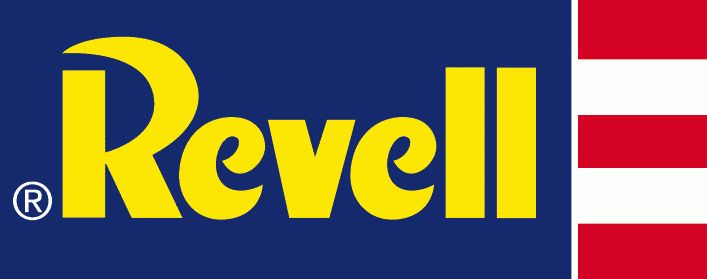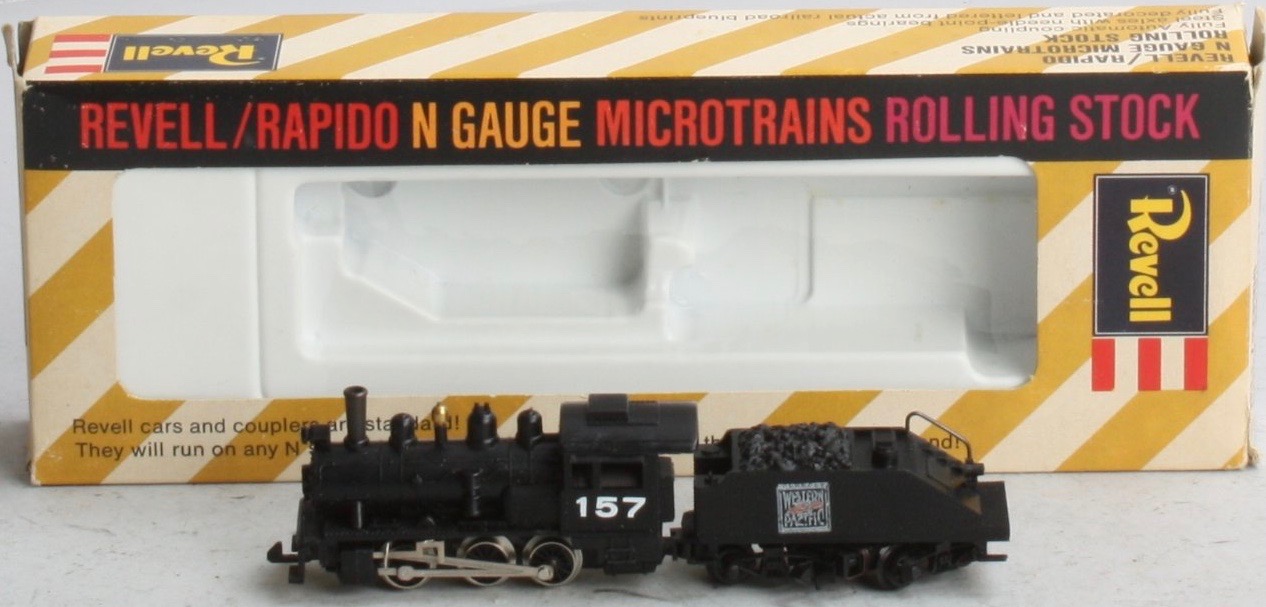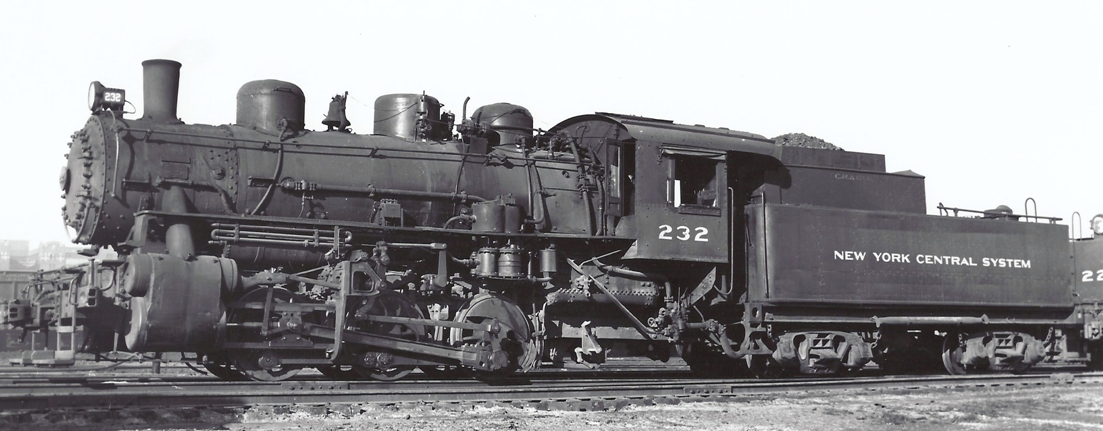Model Information: Arnold Rapido introduced 3 types of 0-6-0 steam locomotives for the US market circa 1967-68. They all share the same mechanism.
- 0225: "Tank Switcher", is actually a german class BR 80.
- 0226: "Old Timer" with a wide smokestack and a cowcatcher pilot.
- 0227: "Switcher" with a narrow smokestack and an unusual coupler in the front.
The last two share the same tender.
- 0225: "Tank Switcher", is actually a german class BR 80.
- 0226: "Old Timer" with a wide smokestack and a cowcatcher pilot.
- 0227: "Switcher" with a narrow smokestack and an unusual coupler in the front.
The last two share the same tender.
Prototype History: The USRA 0-6-0 was a USRA standard class of steam locomotive designed under the control of the United States Railroad Administration, the nationalized railroad system in the United States during World War I. This was the standard light switcher of the USRA types, and was of 0-6-0 wheel arrangement in the Whyte notation, or "C" in UIC classification.
A total of 255 locomotives were built under USRA control; these were sent to various railroads. After the dissolution of the USRA, the Atlantic Coast Line, Chicago, Burlington and Quincy, Chicago, St. Paul, Minneapolis and Omaha Railway, Gulf, Mobile and Ohio Railroad and Texas and Pacific Railway ordered additional copies of the USRA 0-6-0 design, while the Missouri Pacific Railroad and the Wheeling and Lake Erie Railway ordered only copies.
From Wikipedia
A total of 255 locomotives were built under USRA control; these were sent to various railroads. After the dissolution of the USRA, the Atlantic Coast Line, Chicago, Burlington and Quincy, Chicago, St. Paul, Minneapolis and Omaha Railway, Gulf, Mobile and Ohio Railroad and Texas and Pacific Railway ordered additional copies of the USRA 0-6-0 design, while the Missouri Pacific Railroad and the Wheeling and Lake Erie Railway ordered only copies.
From Wikipedia
Road Name History:  The Western Pacific Railroad (reporting mark WP) was a Class I railroad in the United States. It was formed in 1903 as an attempt to break the near-monopoly the Southern Pacific Railroad had on rail service into northern California. WP's Feather River Route directly competed with SP's portion of the Overland Route for rail traffic between Salt Lake City/Ogden, Utah and Oakland, California for nearly 80 years. In 1983 the Western Pacific was acquired by the Union Pacific Railroad. The Western Pacific was one of the original operators of the California Zephyr.
The Western Pacific Railroad (reporting mark WP) was a Class I railroad in the United States. It was formed in 1903 as an attempt to break the near-monopoly the Southern Pacific Railroad had on rail service into northern California. WP's Feather River Route directly competed with SP's portion of the Overland Route for rail traffic between Salt Lake City/Ogden, Utah and Oakland, California for nearly 80 years. In 1983 the Western Pacific was acquired by the Union Pacific Railroad. The Western Pacific was one of the original operators of the California Zephyr.
The original Western Pacific Railroad was established in 1865 to build the westernmost portion of the Transcontinental Railroad between San Jose, California (later Oakland, California), and Sacramento, California. This company was absorbed into the Central Pacific Railroad in 1870.
The second company to use the name Western Pacific Railroad was founded in 1903. Under the direction of George Jay Gould I, the Western Pacific was founded to provide a standard gauge track connection to the Pacific Coast for his aspiring Gould transcontinental system. The construction was financed by the Denver and Rio Grande Western Railroad, a company in the Gould system, which lost access to California due to the attempted acquisition of the Southern Pacific Railroad by the Rio Grande's main rival, the Union Pacific Railroad. The Western Pacific Railroad acquired the Alameda and San Joaquin Railroad and began construction on what would become the Feather River Route. In 1909 it became the last major railroad completed into California. It used 85-lb rail on untreated ties, with no tie plates except on curves over one degree; in 1935 more than half of the main line still had its original rail, most of it having carried 150 million gross tons.
The Western Pacific was acquired in 1983 by Union Pacific Corporation, which in 1996 would purchase its long-time rival, the Southern Pacific Railroad. In July 2005 Union Pacific unveiled a brand new EMD SD70ACe locomotive, Union Pacific 1983, painted as an homage to the Western Pacific.

The original Western Pacific Railroad was established in 1865 to build the westernmost portion of the Transcontinental Railroad between San Jose, California (later Oakland, California), and Sacramento, California. This company was absorbed into the Central Pacific Railroad in 1870.
The second company to use the name Western Pacific Railroad was founded in 1903. Under the direction of George Jay Gould I, the Western Pacific was founded to provide a standard gauge track connection to the Pacific Coast for his aspiring Gould transcontinental system. The construction was financed by the Denver and Rio Grande Western Railroad, a company in the Gould system, which lost access to California due to the attempted acquisition of the Southern Pacific Railroad by the Rio Grande's main rival, the Union Pacific Railroad. The Western Pacific Railroad acquired the Alameda and San Joaquin Railroad and began construction on what would become the Feather River Route. In 1909 it became the last major railroad completed into California. It used 85-lb rail on untreated ties, with no tie plates except on curves over one degree; in 1935 more than half of the main line still had its original rail, most of it having carried 150 million gross tons.
The Western Pacific was acquired in 1983 by Union Pacific Corporation, which in 1996 would purchase its long-time rival, the Southern Pacific Railroad. In July 2005 Union Pacific unveiled a brand new EMD SD70ACe locomotive, Union Pacific 1983, painted as an homage to the Western Pacific.
Brand/Importer Information:  Revell was Arnold’s importer in the 60s.
Revell was Arnold’s importer in the 60s.
Starting in 1967, Arnold and Revell, Inc. of Venice, California entered into a distribution relationship. These new trains would be called MicroTRAINs. The first catalog, dated 1967, shows first generation Arnold rapido F-units on the cover.
More on this site.

Starting in 1967, Arnold and Revell, Inc. of Venice, California entered into a distribution relationship. These new trains would be called MicroTRAINs. The first catalog, dated 1967, shows first generation Arnold rapido F-units on the cover.
Item created by: CNW400 on 2019-03-30 11:50:14. Last edited by CNW400 on 2020-08-11 15:05:42
If you see errors or missing data in this entry, please feel free to log in and edit it. Anyone with a Gmail account can log in instantly.
If you see errors or missing data in this entry, please feel free to log in and edit it. Anyone with a Gmail account can log in instantly.








